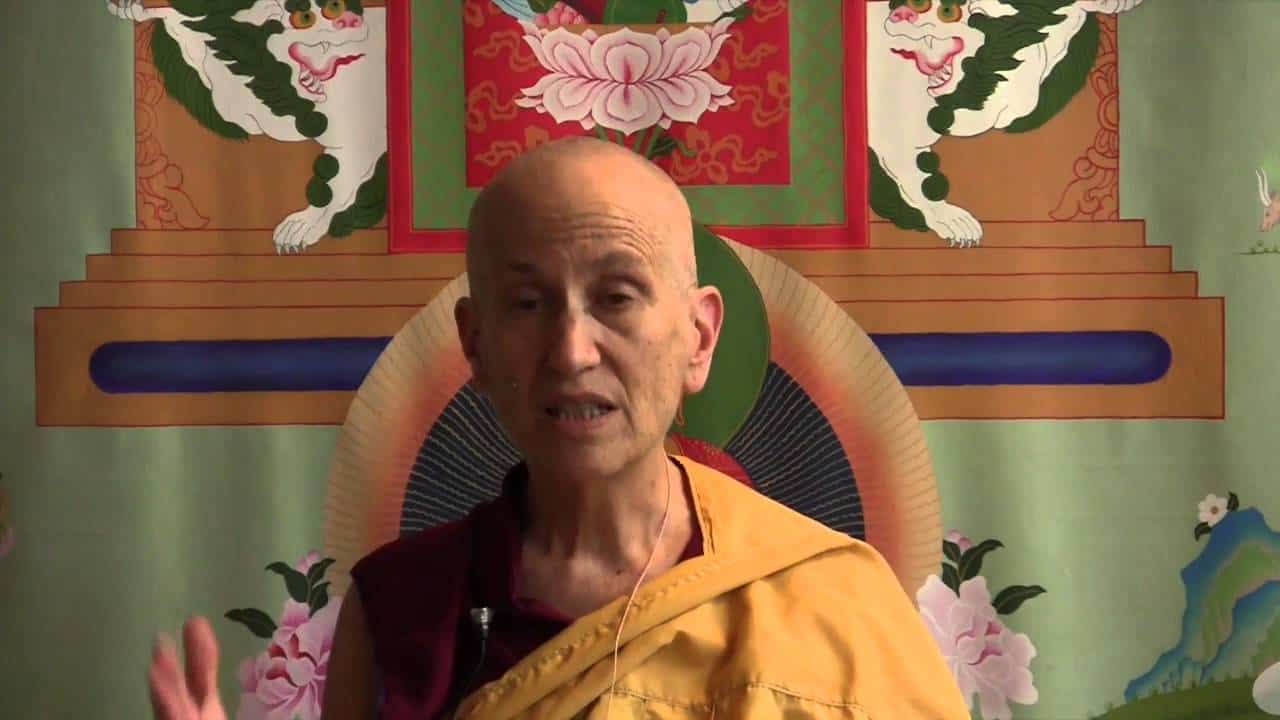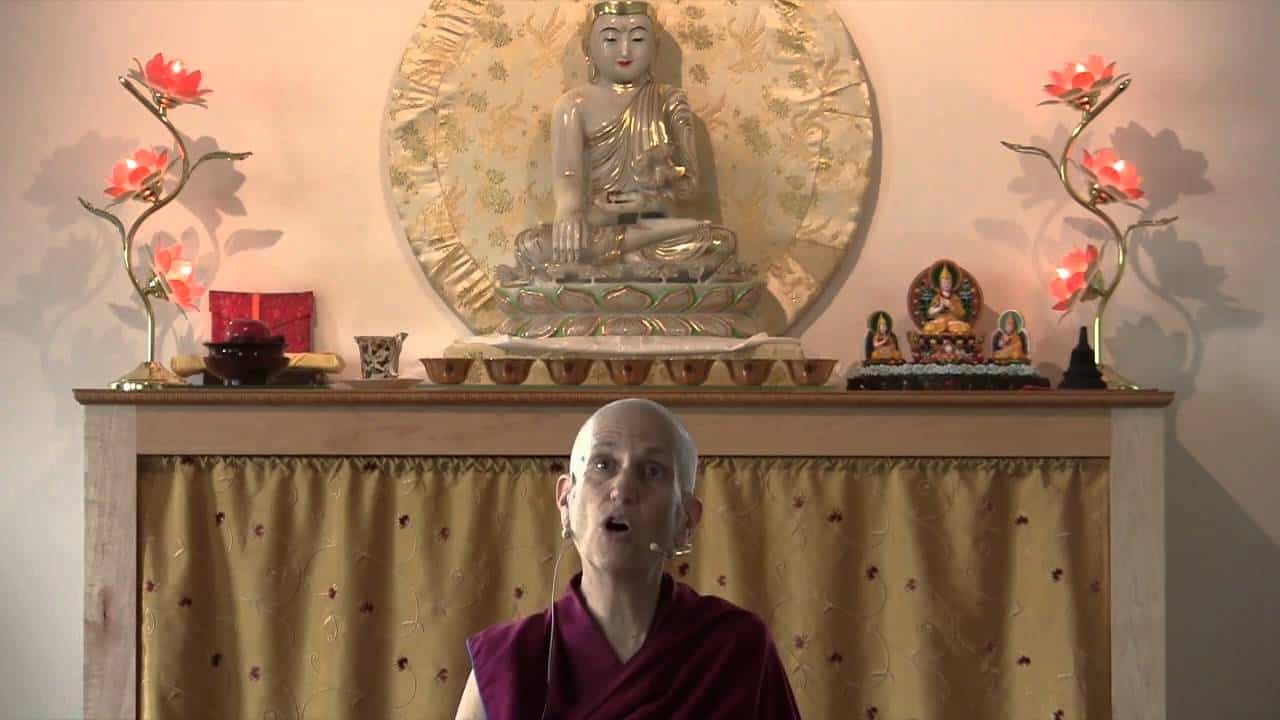Gomchen Lamrim review: Developing conviction in karma
Having generated the motivation for a good rebirth, the text turns to creating the causes for that goal. Part of a series of teachings on the Gomchen Lamrim by Gomchen Ngawang Drakpa. Visit Gomchen Lamrim Study Guide for a full list of contemplation points for the series.
- Looking at the ways we can establish conviction in karma
- The four characteristics of karma
- The four branches of a complete karma
- Action and path of action
Gomchen Lamrim 34 Review: Developing conviction in karma (download)
Contemplation points
- Explore the first general characteristic of karma, that karma is definite. Consider examples of this characteristic in the physical world. Does it makes sense that karma would work in the same way, that happiness can only come from virtue and suffering can only come from non-virtue?
- Explore the second general characteristic of karma, that karma increases. Consider examples of this characteristic in the physical world. Does it makes sense that karma would work in the same way, that an action of virtue or non-virtue can grow into a larger result. Can you think of examples of this from your life?
- Explore the third general characteristic of karma, that if you don’t create the cause, you don’t get the result. Consider examples of this characteristic in the physical world. Does it makes sense that karma would work in the same way, that we can’t experience the result of virtue or non-virtue if we do not create the cause?
- Explore the fourth general characteristic of karma, that karma is not lost. Consider examples of this characteristic in the physical world. Why does this characteristic not imply predetermination? What can impede the ripening of negative karma? What can impede the ripening of virtuous karma?
- Venerable Tsepal mentioned some benefits of thinking about the four characteristics of karma (we’re more likely to refrain from negativities, we’ll purify, we can bear hardship, we have a stable mind…) What are other benefits of a deeper understanding of karma? How has studying karma benefitted your life?
- Consider the process of samsara: self-grasping ignorance —-> afflictions —-> karma —-> karmic seed —-> results. Spend some time reflecting on each of these steps as well as how and why one leads to another.
Venerable Tenzin Tsepal
Venerable Tenzin Tsepal was first introduced to meditation in high school in the 1970s. While working as a dental hygienist in Seattle and hospital administration in Yakima, she practiced and attended retreats in the Vipassana tradition. In 1995, she found Dharma Friendship Foundation and teachings with Venerable Thubten Chodron. She attended the Life As A Western Buddhist Nun conference in India as a lay volunteer in 1996. Following a life-changing 3-month Vajrasattva retreat in 1998, Ven. Tsepal lived in Dharmsala, India for two years where she further explored the idea of monastic life. She received novice ordination as a Buddhist nun with His Holiness the Dalai Lama in March of 2001. After ordination, she was immersed in the full-time residential Buddhist Studies Program at Chenrezig Institute in Queensland, Australia, principally with Khensur Rinpoche and Geshe Tashi Tsering. As a qualified FPMT teacher, Ven. Tsepal was appointed the Western Teacher at Chenrezig Institute from 2004 to 2014, teaching the Discovering Buddhism series, tutoring for the general program and leading retreats. In 2015, she tutored three subjects for the FPMT Basic Program. Venerable Tsepal arrived at Sravasti Abbey in mid-January for the 2016 Winter Retreat. She joined the community in September 2016, and received Shiksamana training that October.


